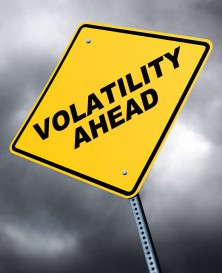Market Volatility Spikes Amid Global Economic Concerns
Equity markets suffered their worst week since 2011 for the week ending August 21, with the Dow Jones Industrial Average down more than 1,000 points and the S&P 500 down 5.7%. Put into the context of the bull market of the past six years, a pullback can be seen as normal activity for a market that has moved steadily higher since the lows of March 2009. Until now U.S. equities have held their ground so far this year, despite various headwinds including declining oil prices and international concerns including those from China and Greece and uncertainty over when the Federal Reserve will begin to raise interest rates.
With the two major bear markets of the 2000s still top of mind, investors appear to have become more bubble-conscious, expecting those major crashes to be a regularly occurring pattern. Andrew Adams, chartered market technician on the Raymond James Investment Strategy team, reminded us in his Thursday morning commentary that history has shown what happened in 2008-2009 is rare. “Here we are, a short time later, about 200% above that 2009 bottom in the grand scheme of things. We are still confident that this run can go even higher for reasons we have frequently discussed over the last few years,” he noted.
In his Friday morning commentary Chief Investment Strategist Jeffrey Saut asked investors to recall that “once the markets enter a selling stampede, they tend to last 17 to 25 sessions, with only one to three rally attempts before they exhaust themselves on the downside. It just seems to be the rhythm of the thing in that it seems to take that long to get everyone bearish enough to throw in the towel and capitulate. Friday was session 24. So, yes, it does feel like capitulation and participants are scared.”
Investors’ anxiety levels continue to be compounded by uncertainty about what Federal Reserve inflation concerns mean for interest rates. Chief Economist Scott Brown shared that July’s monetary policy meeting showed a range of Fed officials’ opinions, with some perceiving a good amount of job market improvement while others not convinced inflation would move back to the 2% goal – both signs of potential rising rates.
“Although global developments and downward pressure on commodity prices ought to lead the Fed to delay its initial rateincrease beyond September, officials are still expected to begin raising rates at some point,”Brown noted. Adams added that “the market still seems to be awaiting clarification about what the Fed will do, and until that happens, the volatility should continue.”
So, our focus remains on long-term gains both for the economy as well as your financial plan. We hope yours will, too. Of course, we’ll continue to monitor market movements for enduring trends and make adjustments accordingly.
We are sending you this update in case the latest market news caught your eye. While we believe investors should pay attention to market activity, short-term declines like the ones we’ve seen in recent days shouldn’t distract you from focusing on the long-term success of your financial plan. If you’d like to discuss recent market events or want to review your portfolio as we head into year-end, please call us. We look forward to speaking with you.

Ali Criss, CFP® Managing Partner & Chief Compliance Officer
